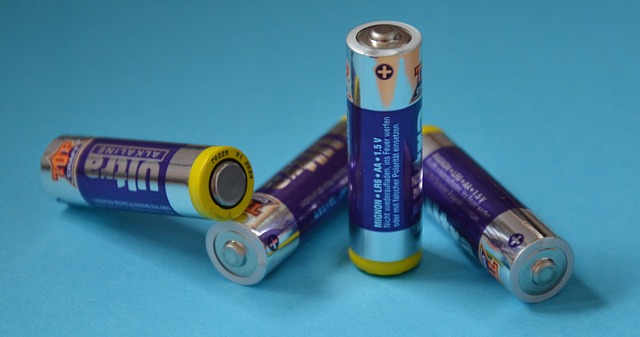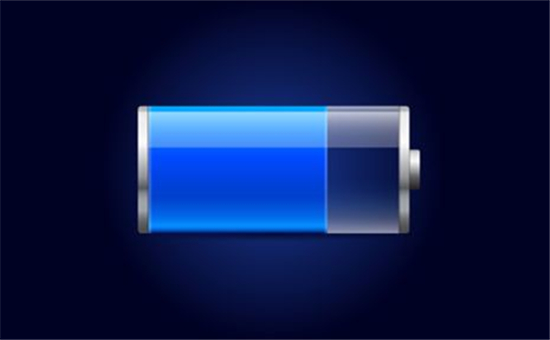What do you think about lithium-ion battery components?
Jul 30, 2019 Pageview:1386
Introduction
Lithium-ion batteries are described as one of the best energy storage technologies. These batteries have been widely used in electric vehicles, portable devices, grid energy storage and so on. Since the commercialization of Li-Ion batteries in 1991, the energy density of Li-Ion batteries has been aggressively increased. In present times, we have experienced state-of-the-art cells that can reach very high energy levels. Extensive research and development are ongoing and it surely enhances the ability to manufacture safe and reliable lithium-ion batteries which will be used in hybrid electric and electric vehicles as well as in solar cells and windmills. Nevertheless, the safety of a Li-Ion battery is still a concern, battery life is still not sufficient and the costs are too high. In this article, you will learn about the major components of a lithium-ion battery, their roles and how they are processed.
Introduction of Major Lithium-Ion Battery Components
Lithium-ion batteries consist of four major components; cathode, anode, electrolyte and separator. Every single component of a Li-Ion battery is essential and the battery cannot function when one of the components is missing. These components make up for the smallest working unit in a battery which is known as the electrochemical cell consisting of a cathode and anode separated and connected by an electrolyte.
The cell designs and combinations in modules and battery packs differ greatly. However, in this article, you will learn about the main cell designs and then the processing and manufacturing of the cells.
The electrodes in lithium-ion cells are always in solid materials. You can use electrolytes to distinguish between cell types. The electrolyte may be liquid, gel or in a solid-state. For instance, the electrolytes in gel and solid-state cells represent a structural component and do need additional separators for the effective separation of electrolytes and prevention of short circuits.
Different Roles of Lithium-Ion Battery Components
Cathode
The cathode can be made of the state-of-the-art materials including lithium-metal oxides, vanadium oxides, olivines and rechargeable lithium oxides. The layered oxides such as cobalt and nickel are the most studies materials for lithium-ion batteries. They are associated with high stability in the high voltage range. However the availability of cobalt is very limited in nature and it’s toxic, which inhibits mass manufacturing. Manganese is a low-cost substitution with high thermal threshold and excellent rate capabilities but offers limited cycling capability.
Mixtures of cobalt, nickel and manganese are used to combine the best properties and minimize the drawbacks. Some Li-Ion batteries have vanadium oxides which offer a large capacity and excellent kinetics, but due to lithium insertion and extraction, the material tends to become amorphous thereby limiting the cycling behaviour. Also, there are olivines which are nontoxic and offer moderate capacity with low fade due to cycling, but their conductivity is low. Some methods are used to coat the material to improve the conductivity of the material but this only increases the processing costs of the battery.
For a lithium-ion battery to generate electricity, there must be chemical reactions of lithium. And that’s why lithium is used in the battery and that is what is called cathode. However, lithium is unstable and so it is used in a combination of lithium and oxygen to form lithium oxide as the cathode. In the cathode of a Li-Ion battery, lithium oxide is used as an active material.
At the cathode, there is a thin aluminium foil used to hold the frame of the cathode coated with a compound made up of active material, conductive additive and binder. The active material contains lithium ions, the conductive additive is added to increase conductivity and the binder is put in place as an adhesive which enables the active material and the conductive material to stay in place on the aluminium substrate.
The cathode has a major role in determining the properties of the battery since the battery’s capacity and voltage are determined by the type of the active material used for the cathode. The higher the amount of lithium, the larger the capacity. Also, the bigger the difference in terms of potential between cathode and anode, the higher the voltage.
Most of the times the potential difference is small for anode depending on the type, but for a cathode, the potential difference is relatively high in general and thus the cathode plays a very important role in determining the voltage of the battery.
Anode
The anode is also coated with an active material which plays an important role in enabling electric current to flow through the external circuit and at the same time allowing reversible absorption of lithium ions released from the cathode.
During a charged state of the battery, the anode contains a high concentration of intercalated lithium ions while the cathode is depleted of lithium. During this time, when the conducting wire connects the anode to the cathode, which is called discharging state, the lithium ions naturally flow from the anode through the electrolyte to the cathode while its associated electron is used to power an electric device.
Graphite is used in the anode because it has a stable structure. Also, due to its low electrochemical reactivity, conditions for storing much lithium ions and price, graphite is considered suitable to be used for the anode.
Electrolyte
The electrolyte allows the movement of lithium-ion only. Lithium ions move through the electrolyte and electrons move through the wire. The electrolyte, therefore, plays an important role in the use of electricity in the battery.
The electrolyte serves the medium that allows for the movement of only lithium ions between the cathode and anode. Materials with high ionic conductivity are mainly used for the electrolyte for ease of movement of lithium ions back and forth.
The electrolyte is comprised of salts, solvents and additives. The salts offer passage for lithium ions to move, the solvents are organic liquids which dissolve the salts and the additives are added in small quantities for specific purposes.
Such kind of an electrolyte only allows ions to move to the electrodes and doesn’t allow electrons to pass. Also, the speed of the movement of the lithium ions depends on the type of the electron.
Separator
The separator functions as a physical barrier between the cathode and anode. It is put in place to prevent the direct flow of electrons and lets only the lithium ions to pass through the internal microscopic hole. Therefore, separator material must meet all the physical and electrochemical conditions.
Separators that are commonly used today are synthetic resin such as polyethylene (PE) and polypropylene (PP).
Separators have built-in thermal shutdown mechanisms and additional external sophisticated thermal management systems that are added to the modules and battery packs. At elevated temperatures, it melts or closes its pores to shut down the lithium ions movement without losing its mechanical stability.
Processing of Lithium-Ion Battery Components
During discharge, there is a movement of lithium ions from the anode to the cathode. The intercalation deintercalation processes lead to volume change in the active electrode materials. This repeated process due to cycling can cause cracks and can lead to eventual fracture resulting in an unusable active electrode material due to disconnection to the electrode collector or a short circuit.
Efforts in the processing and manufacturing of material to boost performance and to manage unavoidable change in volume have been leading toward composite materials with micro and nanoscaled particles. Nanoparticles can handle volume change with a very low risk of crack initiation. In addition to that, their micro-scaled agglomerates and composites result in minimal diffusion path lengths through the slow diffusion electrodes.
For cylindrical cells, the electrolytes are formed from pastes of active material powders, binders, solvents and additives are spread on the current collector foils such as aluminium for the cathode side and copper for the anode side. Calendaring for homogenous thickness and particle side is followed by slitting to the correct width. The components are then stacked to separator-anode-separator cathode followed by winding to cylindrical cells, insertion in cylindrical cases and welding of a conducting tab. Then the cells are filled with an electrolyte which has to wet the separator as well as soak in and wet the electrodes. All other essential insulators, seals and safety devices are then attached and connected.
After all that is done, the cells are charged the first time using sophisticate protocols to enhance the performance, cycling behaviour and battery life, and then tested.
Conclusion
You have just discovered the main components of a lithium-ion battery and their different roles. The lithium-ion cell chemistries offer some of the best alternatives for electrical energy storage for electrical devices and applications. This is attributed to their electrochemical potential, high capacity and energy density.
- Prev Article: Tell Me More About Lithium Oxygen Battery
- Next Article: What to do if a lithium-ion battery explodes?
Leave Message
Hottest Categories
-
Hottest Industry News
-
Latest Industry News











